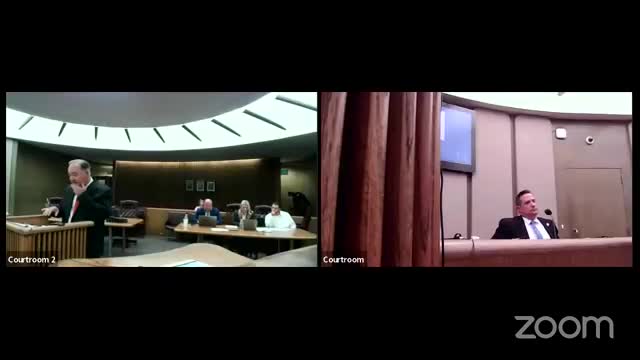Detective reveals shocking details in murder interrogation
August 21, 2024 | 252nd District Court, District Court Judges, Judicial, Texas
This article was created by AI summarizing key points discussed. AI makes mistakes, so for full details and context, please refer to the video of the full meeting. Please report any errors so we can fix them. Report an error »

In a recent court session, critical testimony was provided regarding the investigation of a body discovered in a shallow grave on GeD Road. The witness, a law enforcement commander, detailed the circumstances surrounding the recovery of the body and the subsequent interrogation of a suspect, Jonathan Menard.
The commander described the location of the grave as an area with disturbed dirt, lacking significant tree cover, which could have affected the preservation of DNA evidence. He noted that while DNA recovery is not uncommon in homicide cases, various environmental factors can hinder the process. In this instance, no DNA from other individuals was recovered from the body, raising questions about potential suspects.
During the interrogation, which lasted over three hours, the commander expressed his belief that Menard was not truthful based on inconsistencies in his statements. For example, Menard initially claimed that the victim communicated daily with her mother, only to later contradict himself by stating that weeks could pass without contact. The commander highlighted these discrepancies as indicative of deceit.
The interrogation techniques employed by law enforcement were also scrutinized. The commander confirmed that officers are permitted to use deceptive tactics during questioning, such as implying the existence of incriminating evidence to elicit confessions. Despite these strategies, Menard did not confess to any involvement in the crime.
The testimony underscored the challenges faced by investigators in securing reliable evidence and confessions, particularly in cases where environmental conditions may compromise forensic findings. As the trial progresses, the absence of corroborating DNA evidence and the suspect's inconsistent statements will be pivotal in determining the outcome of the case. The court is expected to hear further testimonies, including that of a new witness, Pam Hansen, as the prosecution continues to build its case.
The commander described the location of the grave as an area with disturbed dirt, lacking significant tree cover, which could have affected the preservation of DNA evidence. He noted that while DNA recovery is not uncommon in homicide cases, various environmental factors can hinder the process. In this instance, no DNA from other individuals was recovered from the body, raising questions about potential suspects.
During the interrogation, which lasted over three hours, the commander expressed his belief that Menard was not truthful based on inconsistencies in his statements. For example, Menard initially claimed that the victim communicated daily with her mother, only to later contradict himself by stating that weeks could pass without contact. The commander highlighted these discrepancies as indicative of deceit.
The interrogation techniques employed by law enforcement were also scrutinized. The commander confirmed that officers are permitted to use deceptive tactics during questioning, such as implying the existence of incriminating evidence to elicit confessions. Despite these strategies, Menard did not confess to any involvement in the crime.
The testimony underscored the challenges faced by investigators in securing reliable evidence and confessions, particularly in cases where environmental conditions may compromise forensic findings. As the trial progresses, the absence of corroborating DNA evidence and the suspect's inconsistent statements will be pivotal in determining the outcome of the case. The court is expected to hear further testimonies, including that of a new witness, Pam Hansen, as the prosecution continues to build its case.
View full meeting
This article is based on a recent meeting—watch the full video and explore the complete transcript for deeper insights into the discussion.
View full meeting
